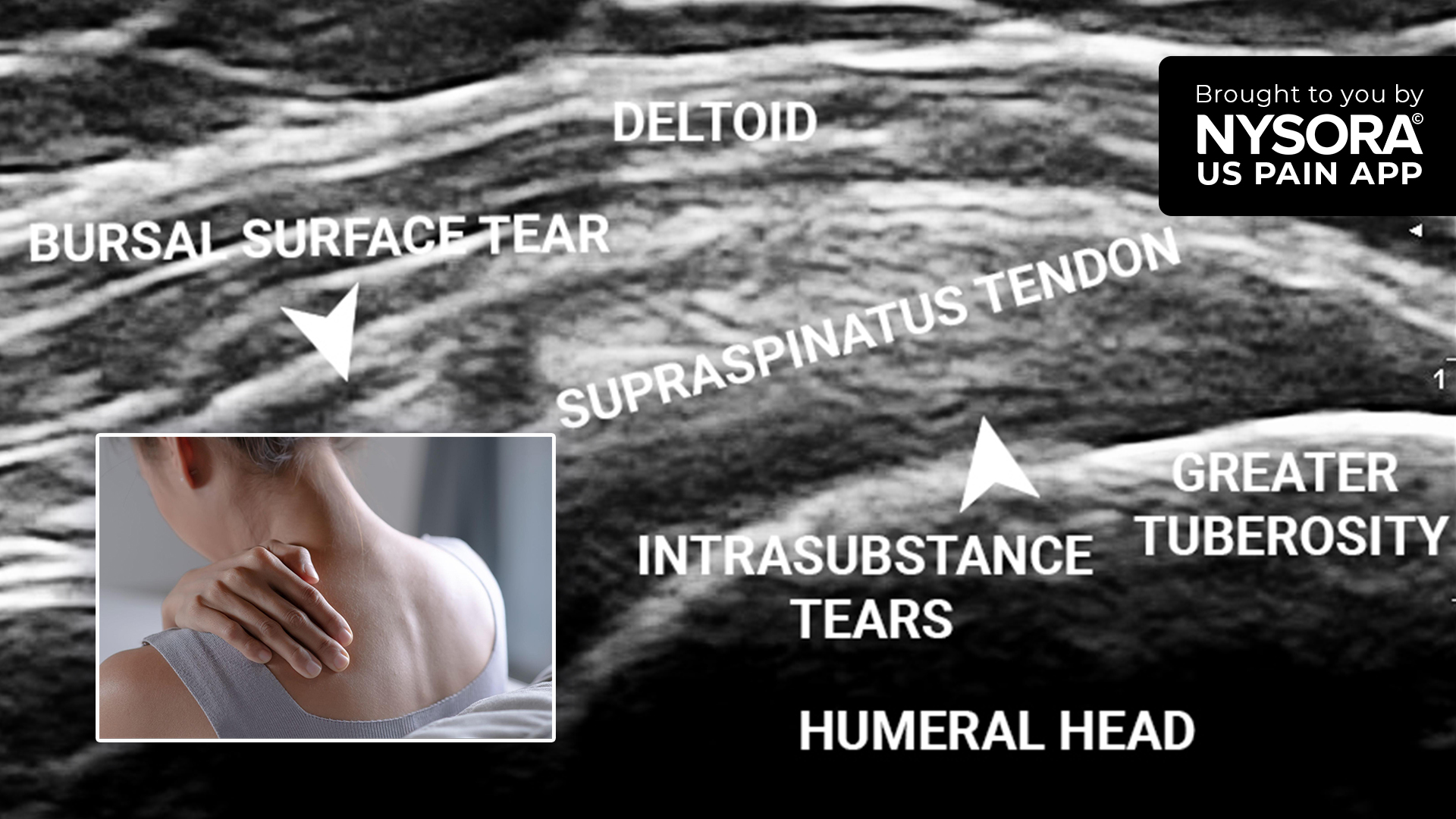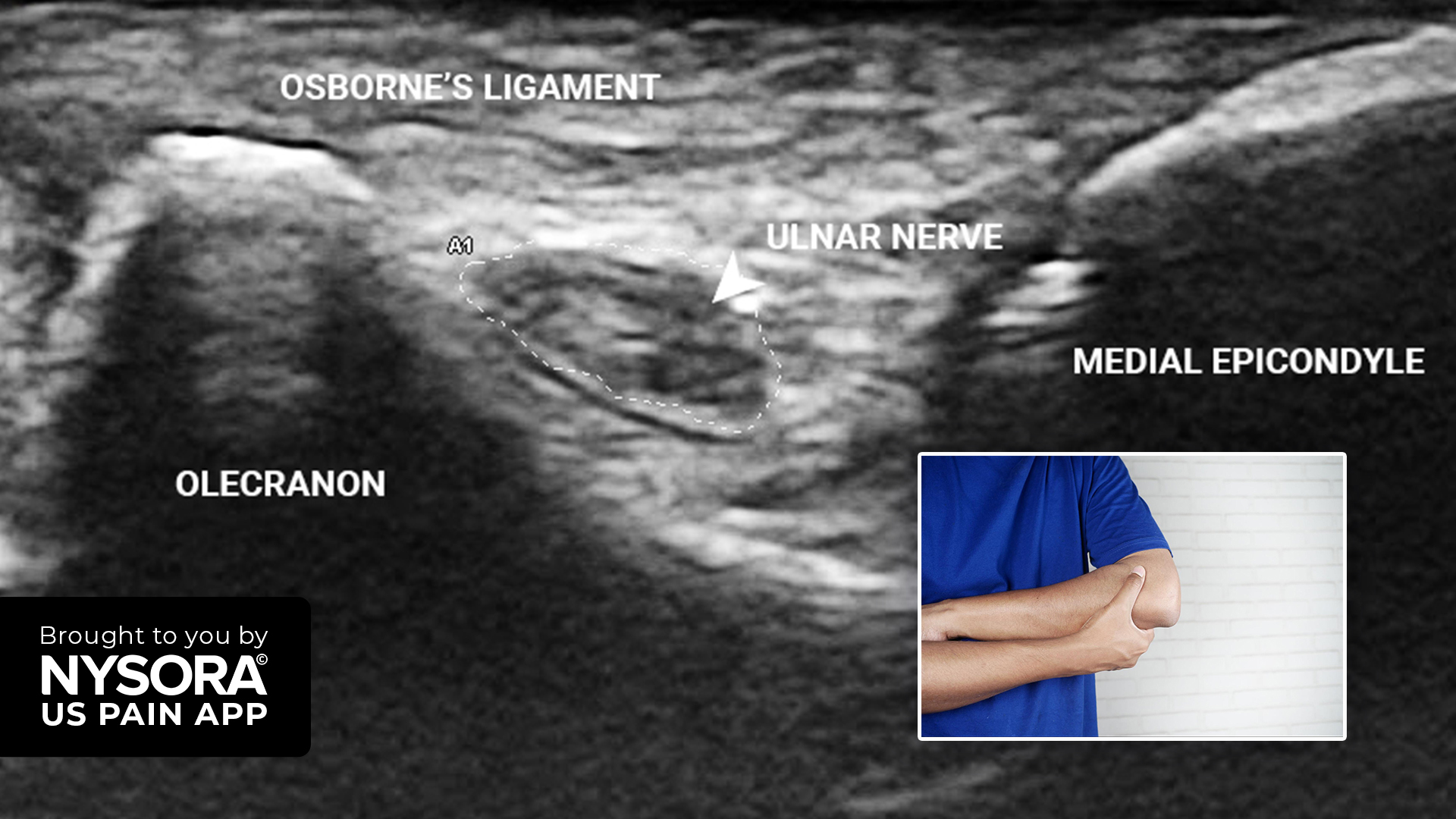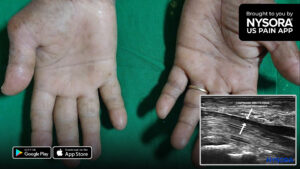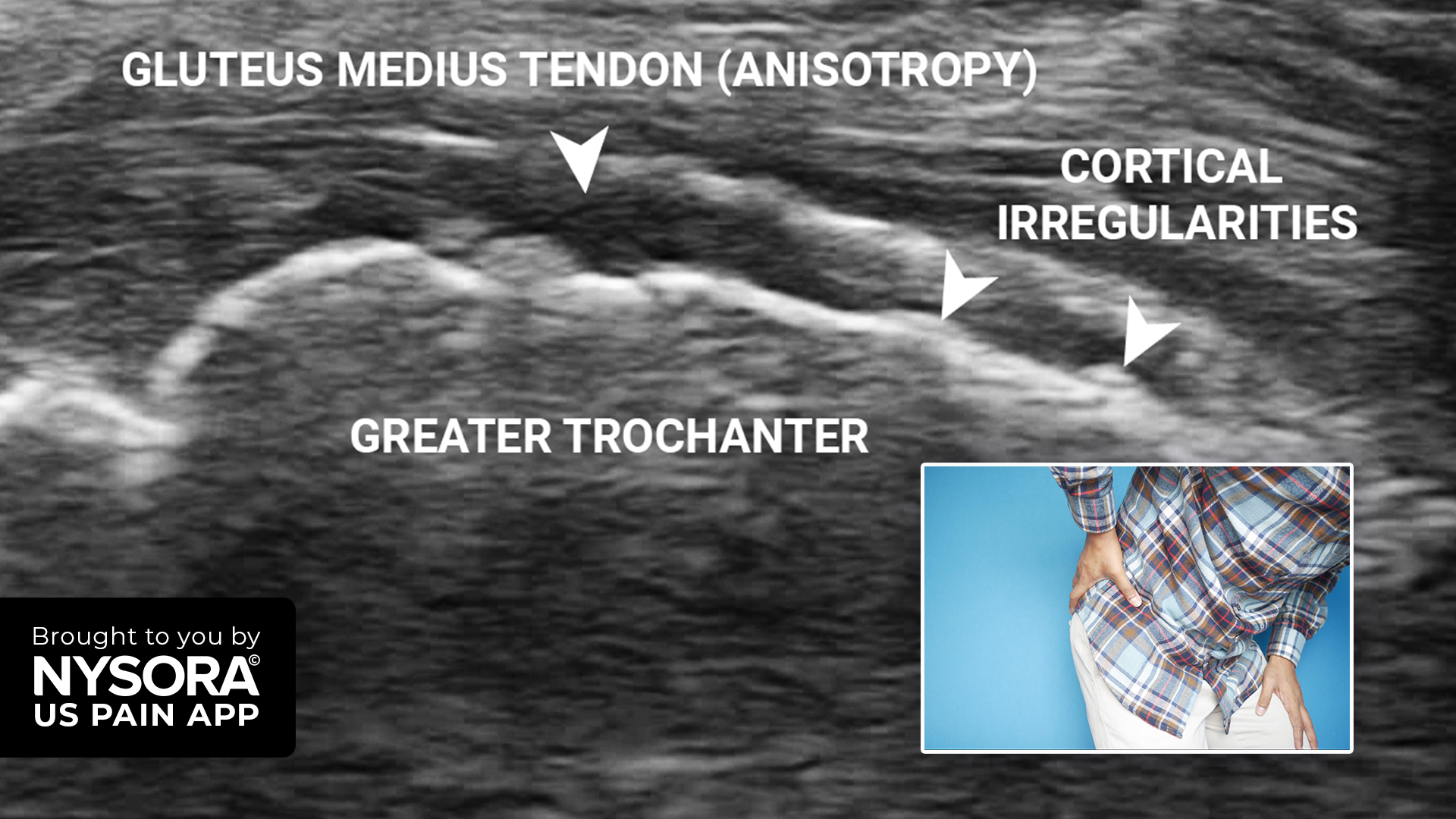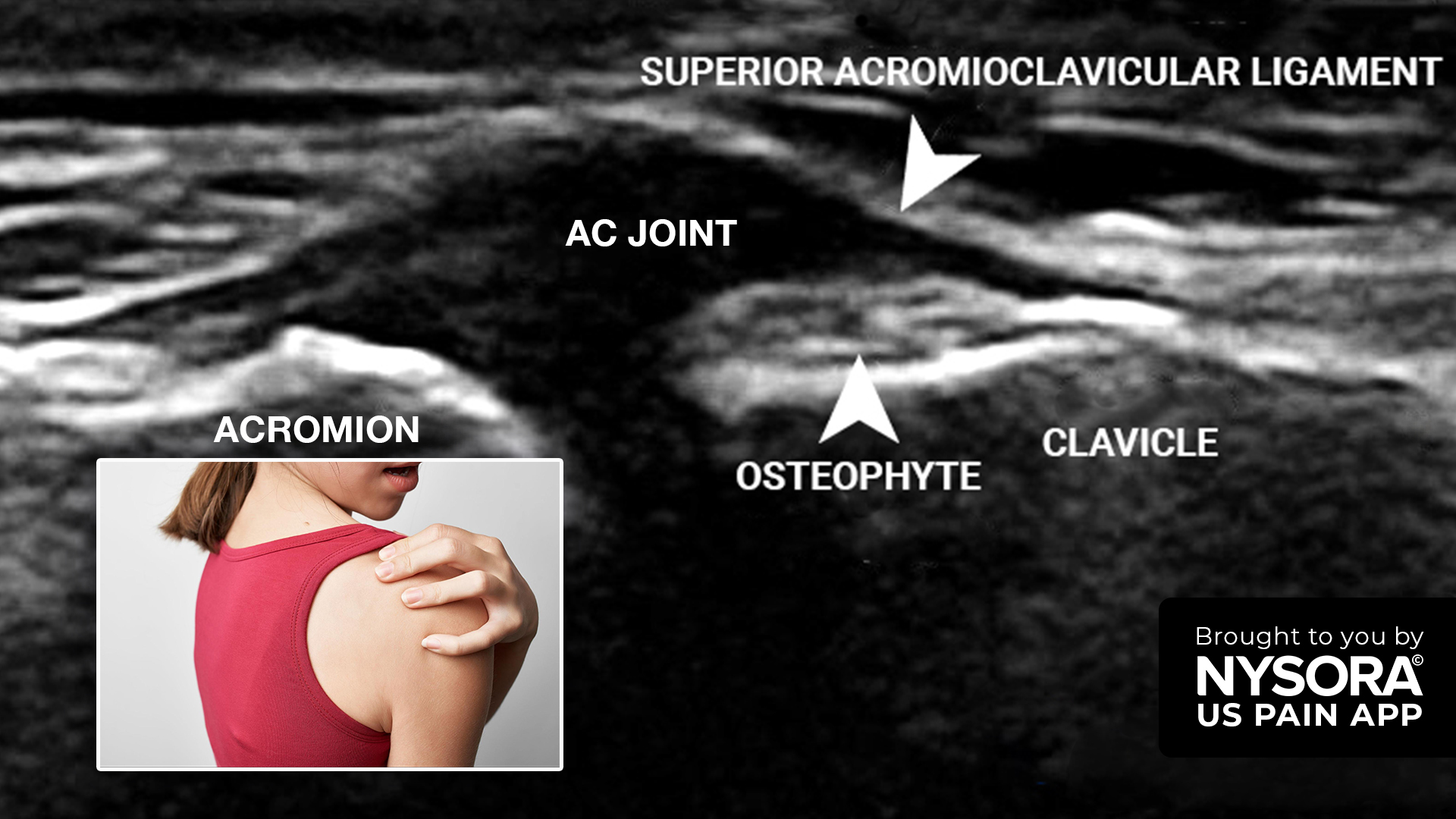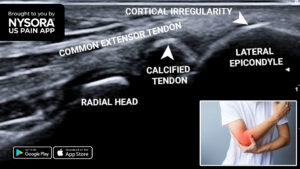A 45-year-old female patient came in reporting chronic left shoulder pain lasting for three months after a minor injury. The pain primarily centered around the upper arm and the supraspinous fossa, worsening notably at night. Additionally, incidental pain was present on shoulder abduction.
Physical examination
- Painful arc present
- Neer’s test: Positive
- Hawkins-Kennedy test: Positive
Ultrasound findings
- Supraspinatus tendon at the level of the superior facet of the greater tuberosity: Normal
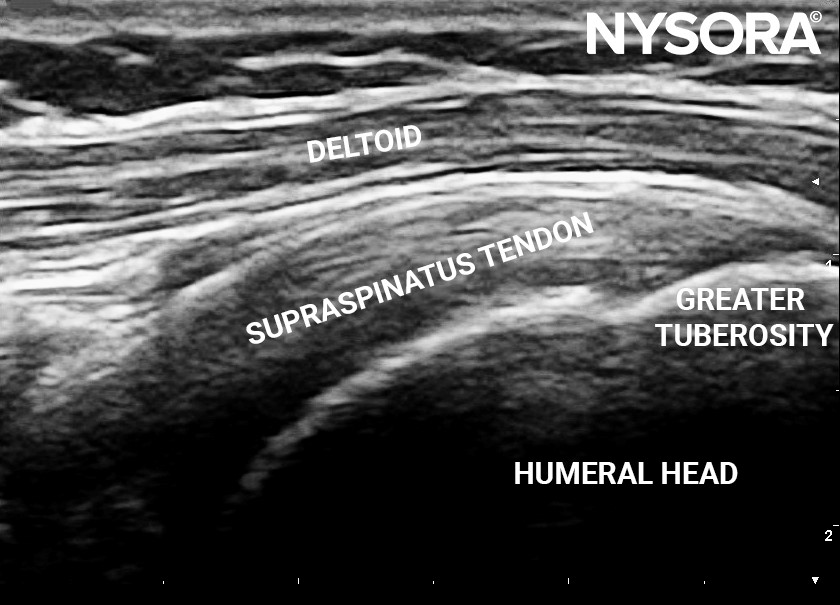
Long-axis view of the rotator cuff at the level of the superior facet of the greater tuberosity.
- Supraspinatus tendon at the level of the inferior facet of the greater tuberosity: Minimal bursal surface tear, intrasubstance tears
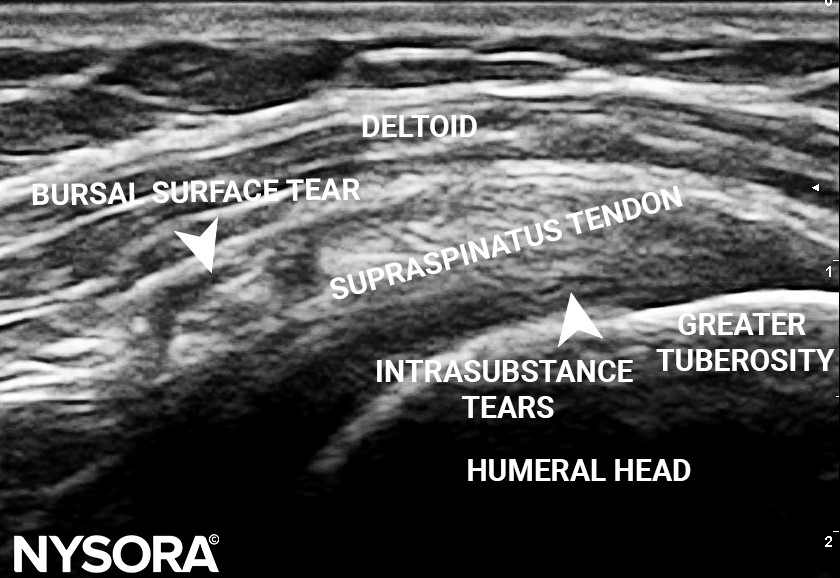
Long-axis view of the rotator cuff at the level of the inferior facet of the greater tuberosity.
- Short-axis view of the supraspinatus tendon: Normal
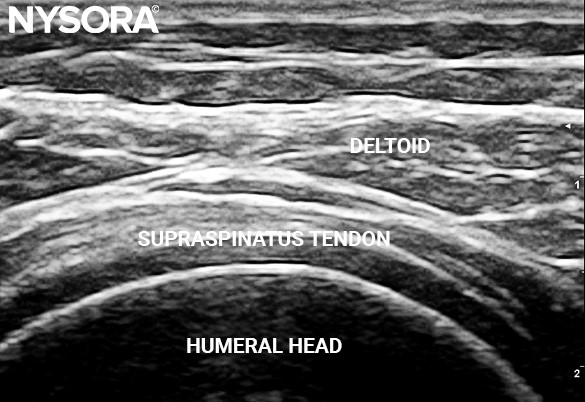
Short-axis view of the rotator cuff.
Diagnosis
The patient was diagnosed with subacromial impingement syndrome secondary to rotator cuff tendinopathy. Subacromial impingement syndrome results from compression, irritation, or inflammation of the rotator cuff tendons in the subacromial space. It causes shoulder pain, weakness, and limited shoulder mobility, often due to factors like repetitive overhead activities or structural issues. This narrowing of the subacromial space compresses the rotator cuff tendons and subacromial bursa. In this particular case, the impingement was attributed to rotator cuff tendinopathy.
Read more about the treatment, patient outcome, and other case studies in the US Pain App. Ready to elevate your knowledge? Tap HERE to download the go-to app for chronic pain procedures.
